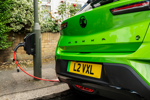New member states are responsible for this convergence, while convergence in older members seems to have peaked.
In the euro zone, pre-tax prices are generally lowest in Finland and most expensive in Germany. Looking at the EU as a whole, Denmark is least expensive on average followed by Estonia, which is the cheapest market among the new member states.
Competition Commissioner Neelie Kroes said: "Price convergence for cars continues to improve in the EU, especially in the new member states. However, price differences for certain models remain significant and consumers should not hesitate to make competition play so as to benefit from the good deals that still exist when buying abroad."
EU competition rules for the motor vehicle sector aim in particular at removing obstacles to parallel imports throughout the EU. The Commission has already brought several cases against car manufacturers who were limiting parallel imports of cars and will continue to do so.
Price differences, based on May 1, 2005 figures, have continually decreased during the past year, since the new member states joined the EU, with the average standard deviation of prices between the 25 national markets falling from 6.9% in May 2004 to 6.4 % in November 2004 and to 6.3 % in the latest report.
However, pre-tax price differences for particular models between the cheapest and most expensive member states can still be substantial, says the ECs Competition Directorate.
Of the 1,878 price quotes in the report, 579 exceed by more than 20% the cheapest market in the EU (compared to 598 out of 1,909 in the previous report).
Of the 10 top best selling cars in EU in 2004, the widest price difference is the euro zone is for the Fiat Punto, which costs almost 30% more in Germany than in Finland. This difference represents a potential saving of €2,700 for the German consumer (including VAT) buying in Finland.
Germany continues to be the more expensive market overall in the EU for the models surveyed. In Germany, 34 models out of 89 in the report are sold to consumers at the highest prices in the euro zone and 20 models are 20% more expensive than in the cheapest national market within the euro zone.
Within the euro zone, Finland is the cheapest new car market. Outside it, Denmark is the cheapest market in the EU with prices 5.7% below those in Finland.
Compared with May 2004, car prices at May 2005 had increased by 0.4% in the EU (+1.3% in the euro zone).
Car prices dropped in the UK (-1.2%), in Poland (-7.6%) and the Czech Republic (-6%). Prices increased, though at a moderate pace, in Germany (+0.3%), France (+0.9%) and Italy (+2.6%). Member states with traditionally low pre-tax prices generally did not experience significant increases in consumer prices for cars. Prices increased in Denmark (+2.4%) and Greece (+1.8%), whereas they decreased in Finland (-2%) and in Estonia (-8.3%).













Login to comment
Comments
No comments have been made yet.